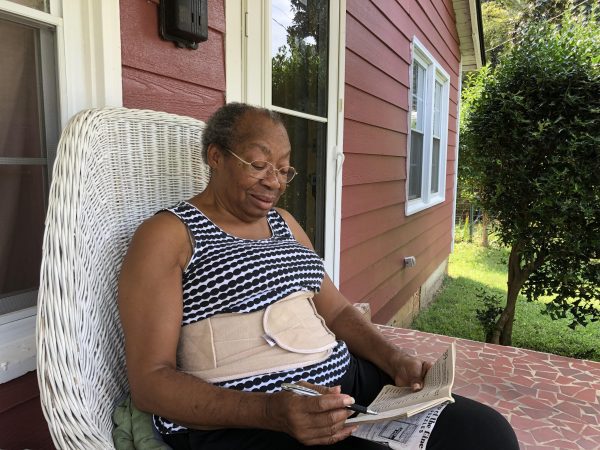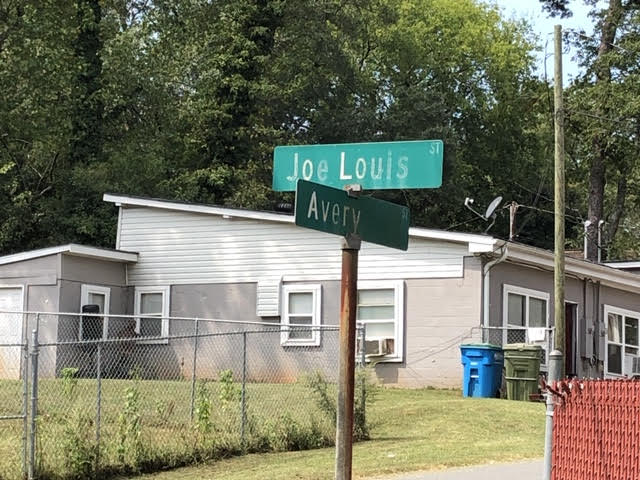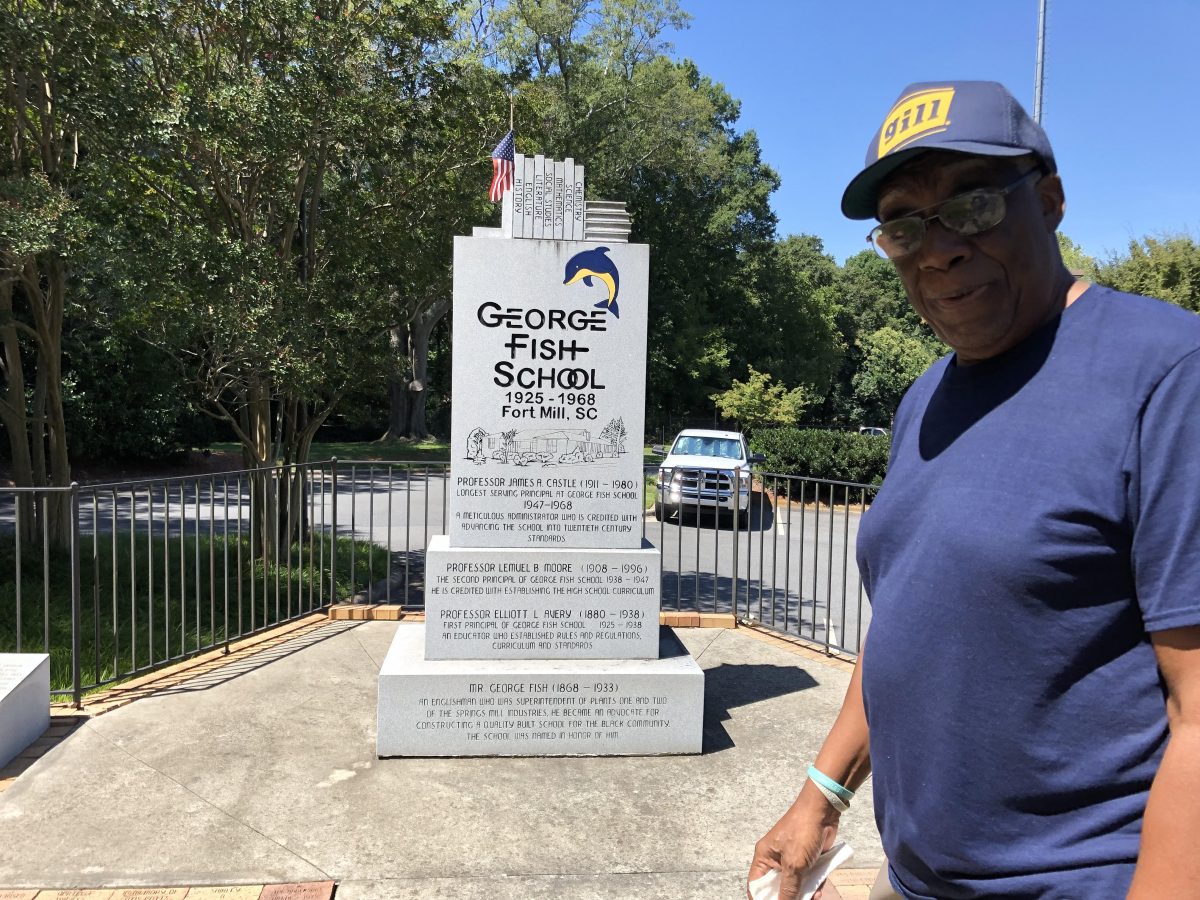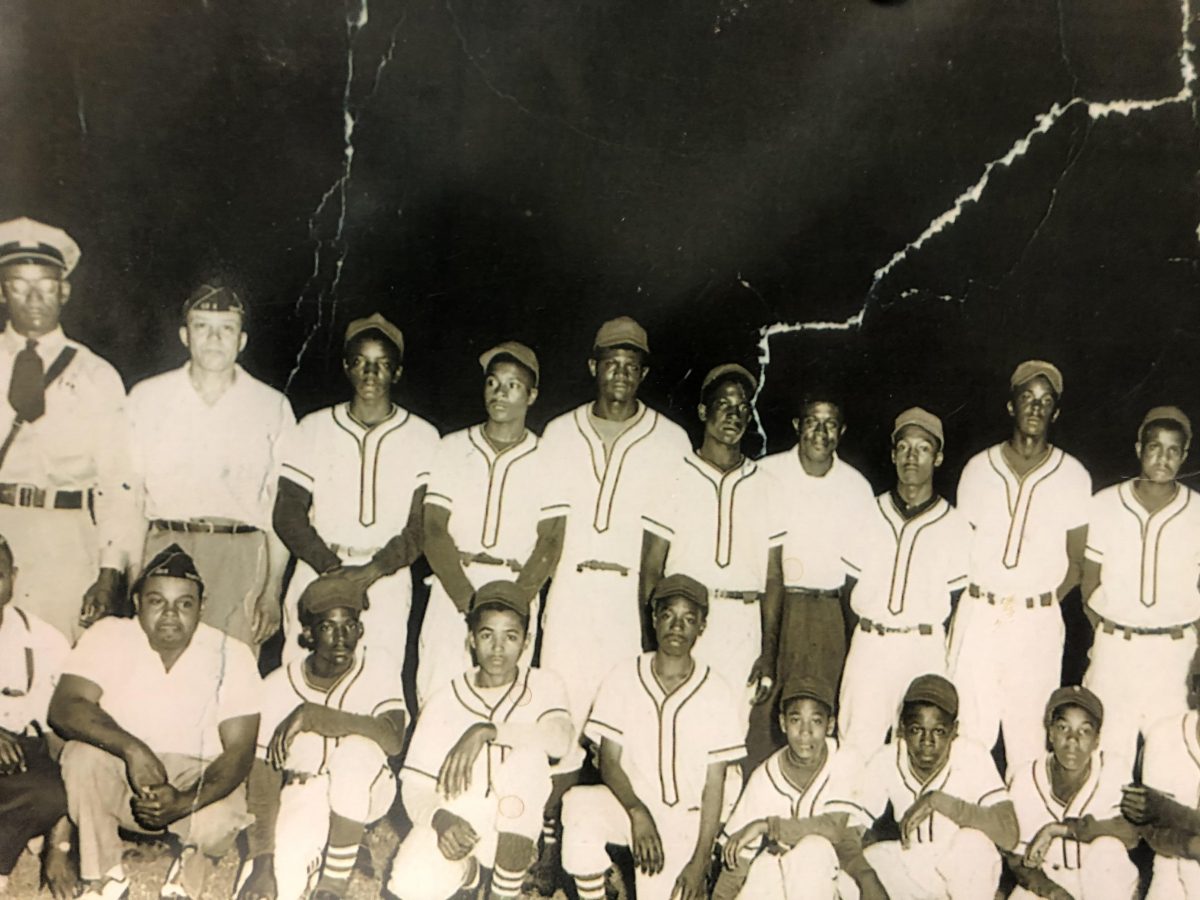Fort Mill’s historic black neighborhood maintains the old, but braces for the new

From her porch in booming Fort Mill, S.C., Barbara Mackey can point out three houses where neighbors who love her live. One takes her to church every Sunday morning. Another trims her hedges and mows her grass. A third chauffeurs her around town whenever she needs to run errands.
“Here, everybody knows everybody,” says Mackey, 77. “It’s just wonderful when you know people are there, just in case you need them.”
But a few blocks away, a dilapidated home sits abandoned; residents walk on asphalt instead of paved sidewalks; and a monument honoring the community’s former all-black school stands on property that now belongs to Duke Energy.
Since she was 14, Mackey’s lived here in Paradise, a historic, predominantly black neighborhood just outside downtown Fort Mill, off busy S.C. 160. Comprised of streets named after prominent African Americans and encompassing about 70 acres, Paradise seems like its own island in this bustling Charlotte suburb that’s undergone rapid development over the last two decades.
The homes are older and smaller. Infrastructure is scattershot. Aging trees loom above power lines and roofs. Most of the residents are 62 or older, and about two-thirds of them are LMI, or low-to-moderate income, according to 2013 data gathered by consultants for the town of Fort Mill. That means while Fort Mill’s median income is just over $71,000 (higher than the national average), residents of Paradise earn less than 80 percent of that amount — many less than half.
It’s not the story most hear when conversation turns to Fort Mill, the fastest-growing town in the Charlotte-metro area — and the nation’s fastest-growing town with at least 15,000 people, according to the U.S. Census Bureau.

The intersection of Joe Louis and Avery streets in Paradise. Joe Louis Street is named for black boxing heavyweight champion Joe Louis. Photo: Jonathan McFadden
With its upscale houses and business parks, this former textile town is a sterling example of what happens when developers leverage proximity to a major metro and elected officials greenlight building. That explosive growth, plus low property taxes and a widely acclaimed school district, has drawn high-earners and corporations from across the state line.
“That’s the new Fort Mill,” Mackey said. “This is the old Fort Mill. I don’t feel the difference because I’m not in the new part.”
Will the old part last? Right at the entrance to Paradise, a nearly 13,000-square-foot shopping center called Steele Street Station is under construction. Some see it as a sign of changes to come. Others see it as a nuisance.
“I hate it with a passion,” Mackey said. “All that newness…I don’t want it. But the town has to grow. You may not like the changes coming in, but you have to live with them.”
| How Paradise got its name |
|
In the early 20th century, a woman named Olive Barron Harris lived on Tom Hall Street, just outside Fort Mill’s black community. According to folklore, she often heard beautiful singing voices from women washing and hanging their clothes, and from parishioners at one of the local churches. She told her friends the melodies “sounded like paradise.” |
That’s why earlier this year, Danielle Watts-Redmond, a 40-year-old descendant of one of the freed slaves who founded Paradise, started a nonprofit to help the neighborhood maintain its cultural identity. Called the Historic Paradise Foundation, the organization also supports residents with events focused on budgeting, home buying and entrepreneurship.
“We can do our own revitalization,” said Watts-Redmond, who grew up in Paradise on a street named after boxing legend Joe Louis. “They’re building up so much around Paradise that it’s creating a higher tax structure. If you’re going to tax us out, where do we go?”
Paradise found
Paradise sprung to life in 1895 when wealthy landowner Samuel Elliot White sold a tract of land to three trustees with Bethlehem Baptist Church. They developed that land into Fort Mill’s first organized black community, where former slaves settled and became teachers, masons, merchants and entrepreneurs.
Paradise flourished as a working-class neighborhood. In 1925, a Rosenwald school opened on Steele Street as the town’s all-black public school. Rosenwald schools were schools, shops and homes for teachers built specifically for African Americans in the South. The school in Paradise was named the George Fish Colored School, in honor of the British textile plant manager who advocated the school be constructed to the same standards as white schools.
“This was the rallying point for not only educating the children, but for meetings between community leaders,” said Rudy Sanders, a Fort Mill native and historian.
In those days, the neighborhood had an all-black youth baseball team and band. Civic groups, such as the Community Concerned Men’s Club, maintained properties and helped neighbors in need.
In 1968, the George Fish School integrated. It changed names twice before shutting down a decade later. The building was demolished in the ‘80s to make room for a Duke Energy facility. A memorial was erected at the site in 2007.
“That school happened to be the anchor of the community,” Sanders said.
Paradise forgotten?
Once that anchor was gone, many people whose lives centered around Paradise left, too.
“Everybody moved away from the Paradise community,” said Willie Culp, a 78-year-old Paradise resident who’s lived in the same house on Steele Street since 1971. Back then, “Fort Mill didn’t have nothing to offer them.”
When Duke Energy moved into the neighborhood, Culp said, “everybody was frustrated. There was nothing we could do about it.”
“There’s a history of the racial makeup of the neighborhood having an impact on decisions for and around and to the neighborhood,” said Tim Veeck, executive director of Habitat for Humanity York County, which rehabs homes in Paradise.
In 2013, 94 percent of Paradise residents were black, while 80 percent of residents in the town of Fort Mill overall were white.

Willie Culp, a longtime Paradise resident, stands in front of a monument dedicated to the George Fish School on Steele Street. In the 1980s, Duke Energy purchased the site of the former all-black school and opened a facility in the heart of the Paradise neighborhood. Photo: Jonathan McFadden
“(Paradise) is a minority community…that did not have a lot of social capital to press in a way that would deliver government funds” to the neighborhood, Veeck said.
Town leaders disagree: Paradise, they say, was never neglected. It looks different from the rest of Fort Mill because most of the town’s development happened on large tracts of land sold by families who held it for generations, said Fort Mill Mayor Guynn Savage.
“When I was a child, we had small neighborhoods — mostly mill villages. Paradise was one of those,” said Savage, who grew up in Fort Mill. Now “most new developments are required to install sidewalks as part of the agreement for coming in town. In my neighborhood…we don’t have sidewalks. It’s more of a new town versus old town issue rather than a Paradise issue.”
As for income disparities, blame the market, she said. Like many southern towns, Fort Mill’s economy was built on cotton and textiles. When the mills moved overseas, the unemployment rate surged and many families in neighborhoods like Paradise experienced economic hardship.
“We didn’t have any jobs in Fort Mill once the textile industry moved,” Savage said. “We went into a severe recession.”
Once the economy recovered, developers bought vacant land and began building new homes and apartments to meet growing demand for housing near Charlotte. A lot of that development happened in surrounding York County, outside of town limits.
“We began seeing the changing economic demographic emerge at that time,” Town of Fort Mill officials said in an email. “There are a few other areas of our community with low-income housing and ‘no growth,’ but on the whole, we have very little poverty and low-income areas in our town. This was not by design, but rather (driven) by market forces.”
Paradise revived
For years, the neighborhood has dealt with community blight and deteriorating water lines.
As far back as the 1970s, the town used federal funds, grants and public-private partnerships for projects addressing those issues. One of the most recent was a series of street and water main upgrades funded by a nearly $600,000 federal community block grant in 2016. But government money only goes so far.
Habitat for Humanity has been paramount in filling the gap, mainly by helping residents make essential home repairs. That work helps revitalize the community, group leaders say.
Because of its aging population, homeownership rates in Paradise are about 20 percent higher than in the rest of Fort Mill. Property values, however, historically have been much lower: $67,500 in Paradise compared to $169,500 in town six years ago, according to consultant data. Property values today range from as low as $10,000 to as high as $80,000 on some streets, York County property records show.
“The Paradise neighborhood had been overpromised and under-delivered,” said Stefanie Barnette, Habitat’s director of program operations and community outreach. Many older Paradise residents, she said, don’t have the financial means or physical capability to give their own homes facelifts.
As of May 2019, Habitat’s helped repair 32 homes in Paradise, but the fixes go beyond adding new roofs and paint.

Paradise’s all-black youth baseball team. Photo courtesy of Willie Culp
Many homes require electrical upgrades. Several have disintegrating plumbing pipes. And some still need repairs after a devastating 2011 hailstorm. “We’re still working on projects from contractors who have taken advantage of homeowners,” Barnette said.
Savage, the mayor, said town leaders allocate money for facilities, parks and other improvements in Paradise. However, because property values and incomes in Fort Mill have drastically grown, she said, it gets “less of a look” for grants that could be earmarked for neighborhood uplift.
“Every place we can garner a seat at the table to get money, we do,” she said. “We’re certainly welcoming to all types of help that would help those areas.”
Preserving Paradise
It’s possible more money will flood Paradise — but some fear it won’t be the kind that helps the neighborhood keep its character.
People are starting to flip homes and charge rents upward of $1,300 — a price point many in Paradise can’t afford, said Watts-Redmond, founder of the Historic Paradise Foundation. She’s OK with the Steele Street Station development as long as it means more jobs for Paradise residents and doesn’t bust wide the door to gentrification.
Development may happen around Paradise, but Mayor Pro Tem Larry Huntley, a longtime Fort Mill town councilman whose ward includes Paradise, doubts the wave of growth will directly touch it.
“I don’t know how you develop Paradise without displacing people like they did to (uptown) Charlotte,” he said. “To develop an area, you’ve got to go in and tear something down. I don’t know if there’s a desire of the people in Paradise to have their houses torn down.”
But Watts-Redmond isn’t sure Paradise won’t be next on the list of historic black communities transformed for development’s sake — not when land can be sold, and neighbors priced out.
“Everything around,” she said, “is basically trying to push them out.”
Jonathan McFadden